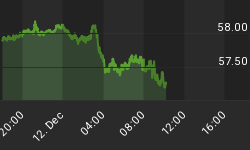"The real price of every thing, what every thing really costs to the man who wants to acquire it, is the toil and trouble of acquiring it... But though labour be the real measure of the exchangeable value of all commodities, it is not that by which their value is commonly estimated... Every commodity, besides, is more frequently exchanged for, and thereby compared with, other commodities than with labour." ~ Adam Smith, The Wealth of Nations, 1776
The above quote would be lost on Fed Chairman Ben Bernanke who on November 5th said, "Although low inflation is generally good, inflation that is too low can pose risks to the economy - especially when the economy is struggling. "And now he wants higher inflation rates. To be more specific, he wants core CPI inflation, which excludes food and energy, to rise by about 2% a year. Apparently his econometric models tell him that this is the magic number which will create more jobs and wealth for us all. And of course he says he doesn't want food and energy prices to go up because the average citizen will certainly notice their gas bills and grocery bills rising. As silly as that sounds, it's even more ridiculous that Bernanke thinks he can control the prices of food andenergy while other prices increase.
It's important to remember that Ben Bernanke is an academic. He has never held a job outside of academia or the government. He does not see things the way the common citizen does as he lives in a world of formulas and lever pulling. He believes he can turn dials and pull levers, forcing consumers to do his bidding like rats running around in a maze. If prices are going up and people are hurting, in his mind that is fine because according to his formulas, we're all better off. But let's look at this from the consumer's standpoint. Are we better off with declining prices or not?
According to the Council for Community and Economic Research, the price of a personal computer has fallen by 81% in the last thirty years. Does Bernanke think this is a bad thing? This is not food or energy, so this item does fall into the core CPI category that Bernanke is so determined to see rise. Are we better off due to computer prices being so much lower than they once were? I think the vast majority of people using common sense understand that yes, of course we are. But according to Bernanke's theories, this is nowbad for the economy.
It is easy to forget that there once was a time in this country, and most of the world, when prices generally declined. From 1800 through 1860 prices fell almost continuously and the value of the dollar increased in value by 51%, according to the website SeekingWorth.com. After the Civil War the value of the dollar continued to increase, rising by another 64% until 1913. In Bernanke's mind this is a catastrophe. Consumer prices were falling nearly every year during these time periods. He would call this a deflationary spiral that leads to economic depressions. But in the 1800-1860 period, real GDP per capita rose by 87% and from 1865-1913 it rose by 106%! No deflationarydepressions there.
After 1913 we see a dramatic reversal in the value of the dollar. Since 1913 the dollar has lost 95% of its value. What could have possibly caused this abrupt change? It wasn't war, it wasn't disease, and it wasn't lack of productivity. It was the creation of the Federal Reserve. They were given a license to print money and expand the money supply through the banking system, resulting in the destruction of the dollar we have seen since.
Let's get to what Ben Bernanke really wants. He wants banks to start lending and people to start borrowing and spending again. Increases in the CPI would just be a symptom of this. But banks are not obliging as they are sitting on over $1 trillion in bank reserves. As long as the banks aren't lending like they were before the credit meltdown, it will be hard for Bernanke to get consistent 2% core CPI inflation. But if the banks do decide it's time to party again, Bernanke and the rest of us could get much more than the magical 2% figure and it won't be limited to CPI less food and energy.
















